November 04, 2015
In October 2009, the unemployment rate peaked at 10.0 percent. That same month, unemployment was 9.2 percent for white Americans and 15.8 percent for black Americans. While unemployment then began falling for whites, the black unemployment rate rose for another five months before it started declining. As of September 2015 the black unemployment rate was 9.2 percent, the same as the white unemployment rate from the peak of the recession.
Much reporting has focused on the fact that unemployment is higher for blacks than for whites. While this is an important point, it actually understates the level of racial inequality in the labor market for a number of reasons. One often overlooked point is that the experience of black unemployment is different than the experience of white unemployment.
This study shows the extent to which racial inequalities persist even amongst the unemployed. By a variety of measures unemployment is likely to be an even worse experience for black Americans than for whites.
The Extent of Unemployment
This post examines unemployment over the past year from October 2014 to September 2015. During this period, the white unemployment rate was 4.7 percent and the black unemployment rate was 10.0 percent. This disparity remains even when we look at rates of employment, which in certain instances serve as better measures of labor market weakness than rates of unemployment.[i]
Unemployment is higher for blacks even after adjusting for demographic factors such as gender, age, and levels of education. Over the past year, unemployment has averaged 10.7 percent for black men and just 4.7 percent for white men; for black women, unemployment has averaged 9.3 percent, and for white women, it has been 4.6 percent. This can be seen in Figure 1 below.
Figure 1
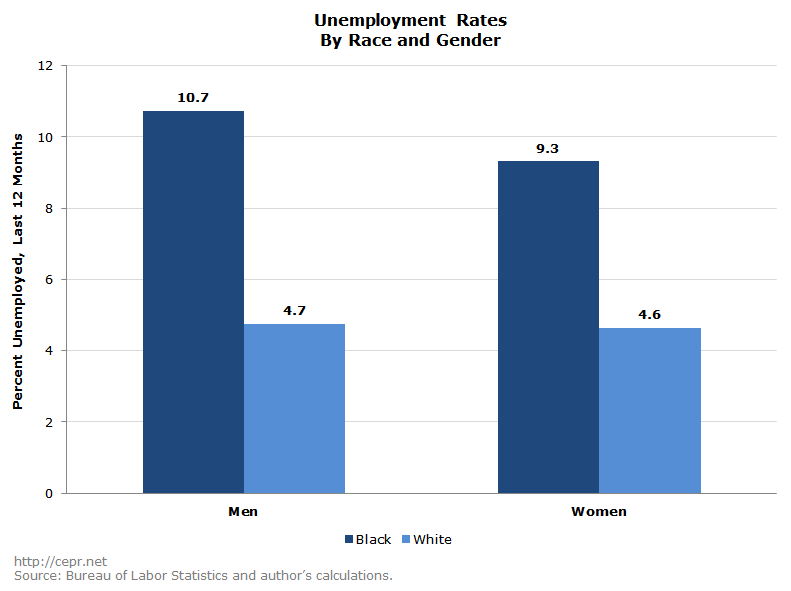
Figure 2 shows unemployment rates by race and age. Unemployment is highest amongst black Americans aged 16 to 19 at a rate of nearly 30 percent. Black unemployment is always higher than white unemployment, ranging from a gap of 2.5 percentage points amongst 55 to 59 year olds to a gap of 14.9 percentage points amongst 16 to 19 year olds. As a general rule of thumb, within each age group the black unemployment rate is about twice as high as the white unemployment rate.
Figure 2
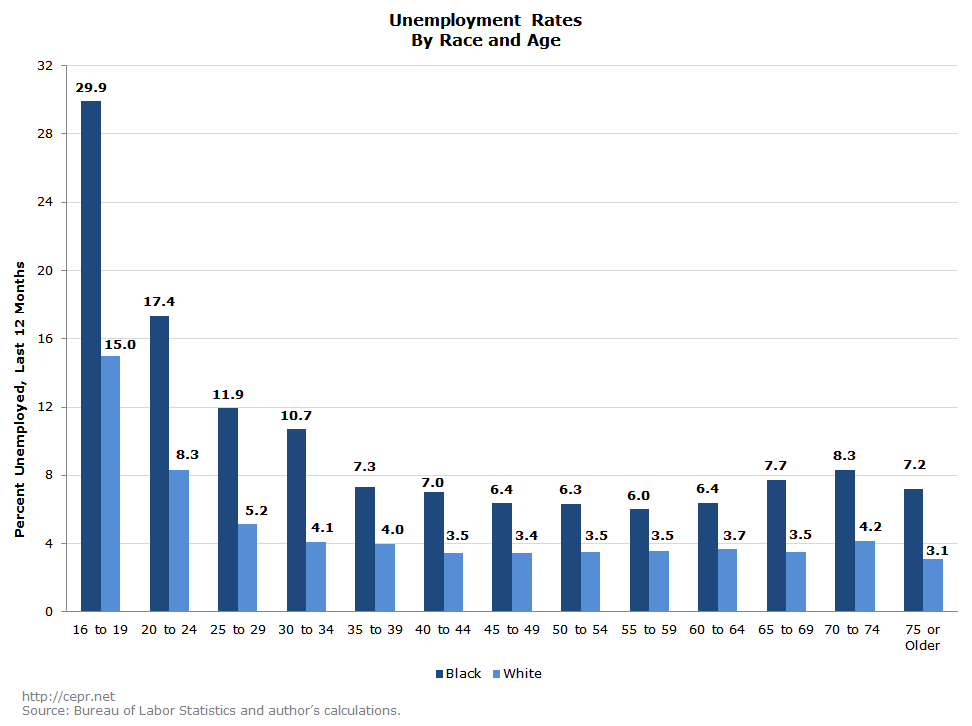
These racial disparities are also apparent when we look at unemployment rates by educational attainment. Figure 3 shows rates of unemployment by race and level of educational attainment for persons 25 and older.[ii] While education is clearly a significant factor in determining rates of unemployment, racial inequalities nonetheless hold within each group.
Figure 3
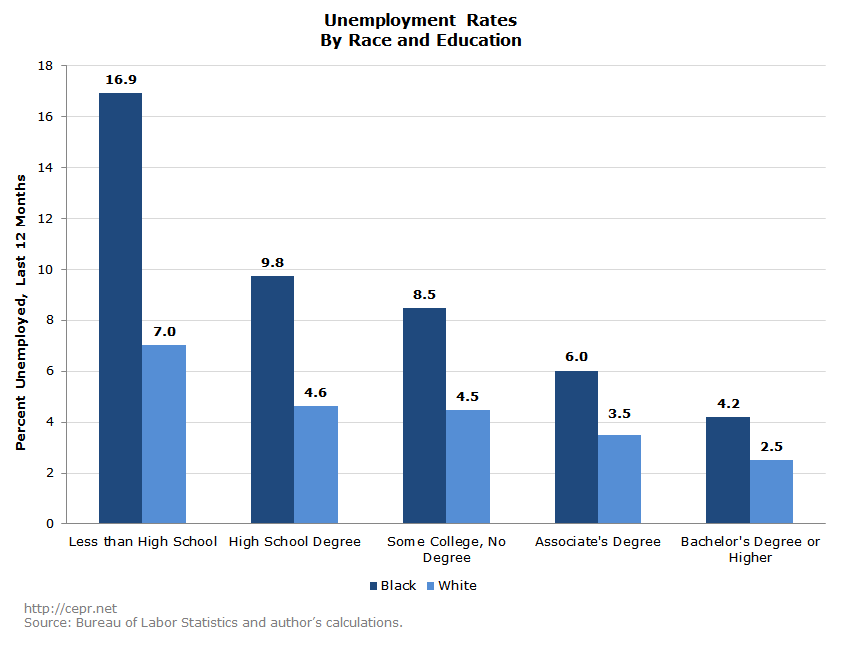
Finally, it should be noted that the unemployment rate understates the degree of racial inequity in at least one respect: it doesn’t account for involuntary part-time workers. These are workers who would like full-time jobs but are working part-time because they can’t find full-time work. Excluding farm employment, involuntary part-time employment is over 6 percent for blacks and over 4 percent for whites, as can be seen in Figure 4. Given that involuntary part-time workers work about half as many hours as full-time workers, it’s fair to say that these workers are effectively “half unemployed.” Incorporating the hours not worked by involuntary part-time workers would increase the black unemployment rate about 3 percentage points and would increase the white unemployment rate about 2 percentage points; this would increase the racial unemployment gap roughly 1 percentage point.
Figure 4
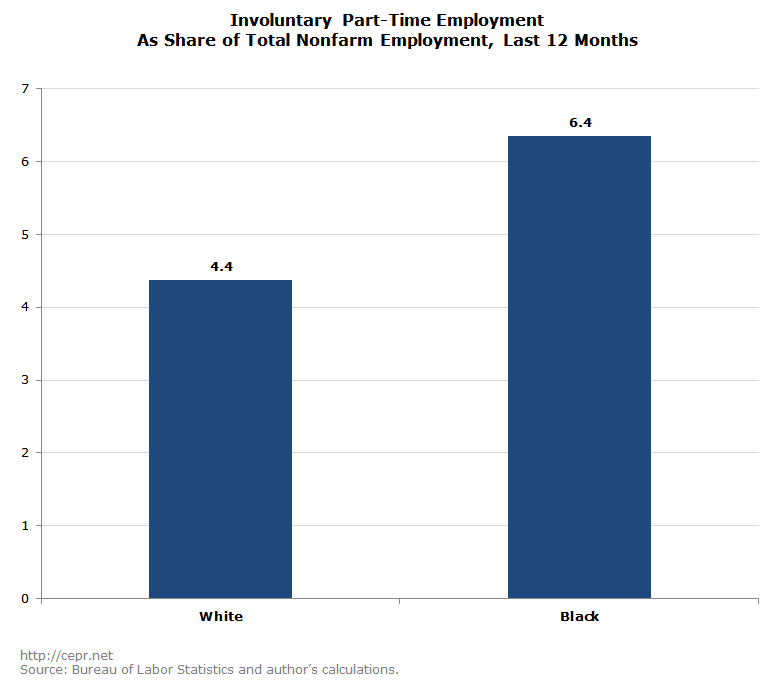
The Duration of Unemployment
In addition to being unemployed at greater rates, for black Americans the duration of unemployment tends to be longer. Data from the Bureau of Labor Statistics show that for black Americans, the average duration of unemployment is 35.3 weeks and the median duration is 16.6 weeks; for white Americans, the durations are 28.5 and 11.2 weeks, respectively. Black Americans are typically unemployed for longer periods of time than white Americans.
Figure 5 breaks out unemployed workers by race and duration of unemployment. Unemployed white workers are more likely to be unemployed 14 weeks or fewer, while unemployed black workers are more likely to be out of work 15 weeks or longer.
Figure 5
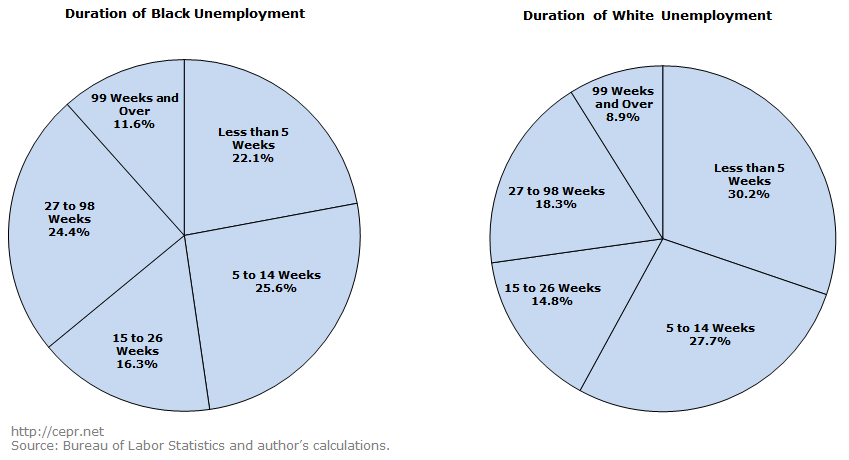
Figure 6 shows the unemployed by race and duration of unemployment as shares of the civilian labor force. This allows us to assess how the combination of higher unemployment and longer durations of unemployment affect black workers’ labor market experiences.
Figure 6
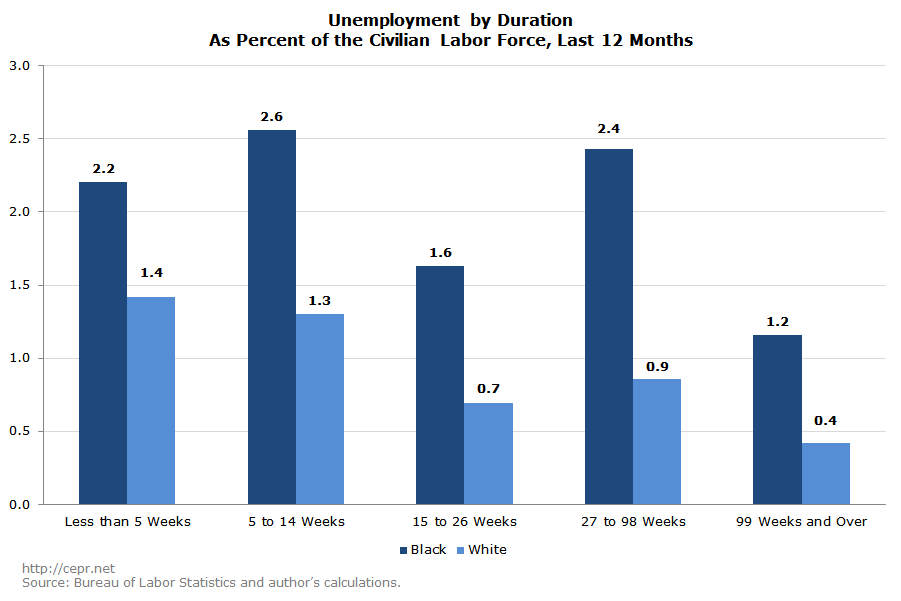
There is an issue that if the same share of workers were unemployed at some point over the course of a year, but black spells of unemployment were longer than white spells, we would find a higher unemployment rate for blacks. However, Figure 6 shows that this is incorrect by incorporating data on the short-term unemployed; even for spells of unemployment of less than five weeks, unemployment is higher amongst blacks than amongst whites.
This analysis indicates that black Americans are not only more likely to become unemployed; once becoming unemployed, they are also more likely to remain unemployed for a long period of time.
Reasons for Unemployment
Figure 7 shows that unemployed black workers are more likely than white workers to be classified as New Entrants and Reentrants to the labor market. Unemployed white workers are more likely to be classified as Job Leavers and Job Losers. This means that unemployed black workers are less likely to have left their jobs voluntarily or be eligible for Unemployment Insurance (UI) benefits. (Only job losers who were not dismissed are eligible for UI.)
Figure 7
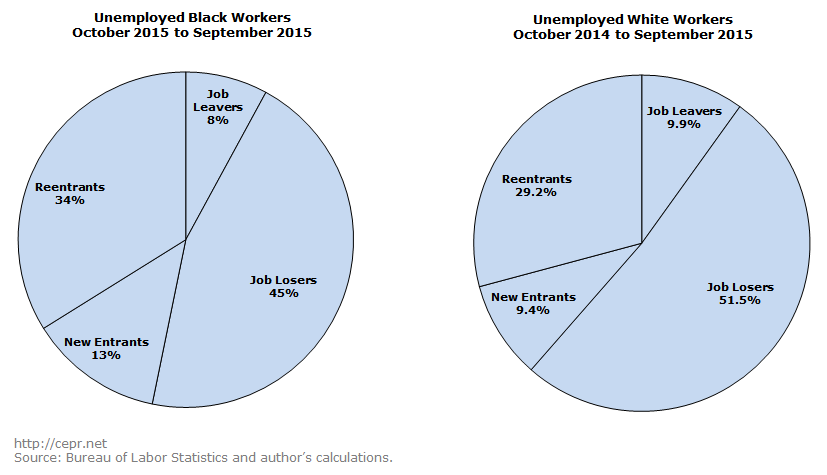
Figure 8 shows the percentage of the labor force falling into each type of unemployment by race.
Figure 8
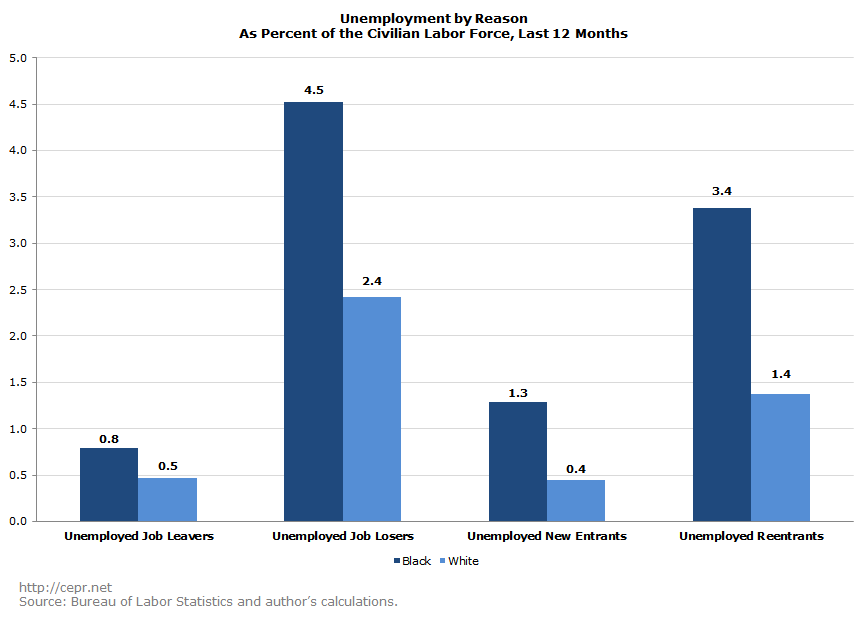
Conclusion
While it is widely reported that the black unemployment rate is far higher than the white unemployment rate, there are important differences in the experience of unemployment by race. These differences are likely to make the experience even worse for black Americans than for whites. Differences in unemployment rates are themselves significant, but they mask the fact that black unemployment is often worse than white unemployment.
[i] In order to be counted as unemployed, a prospective worker must have searched for work within the past four weeks. This means that if a jobless worker becomes so discouraged with her job prospects that she stops searching for work, she will no longer be counted as “unemployed”; for this reason, the unemployment rate will fall. An easy way to correct for this problem is to examine rates of employment rather than unemployment. Between October 2014 and September 2015, the white employment rate was 4.6 percentage points higher than the black employment rate, and the prime-age white employment rate was 6.6 percentage points higher than the prime-age black employment rate. (“Prime-age” refers to the ages 25 to 54, when workers are most likely to be employed.) These figures are fairly consistent with the gap of 5.3 percentage points between the black and white unemployment rates.
[ii] Figure 3 is limited to persons aged 25 and older so as to correct for the fact that persons with higher levels of education tend to enter the labor market at older ages. While a person with just a high school degree may very well be working at age 19, a person who later obtains a bachelor’s degree will still be in college at that age.






